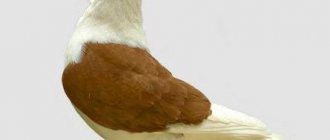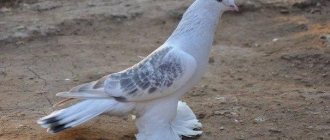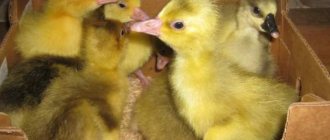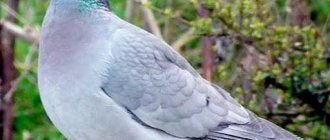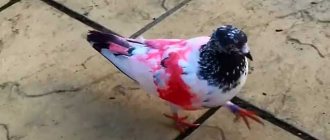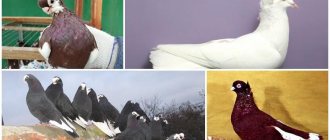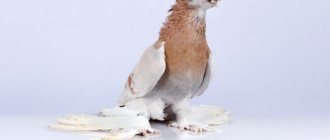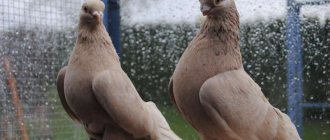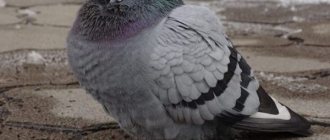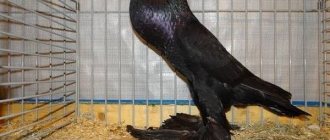In the modern age of advanced technology, when a person is able to receive an almost instant message from an addressee located several thousand kilometers away, rarely anyone is able to take pigeon mail seriously. However, communication through electronic communications is also not without its weaknesses, because even with a simple power outage it will be inaccessible. And the confidentiality of such messages raises many complaints. Therefore, although pigeon mail is considered hopelessly outdated and unclaimed today, it should not be completely written off.
History of carrier pigeons
Birds, which are capable of carrying information messages across many hundreds and even thousands of kilometers, have been mentioned in historical documents since ancient times. Even in the Old Testament, Noah released a dove to scout, and it returned back with an olive branch - a symbol of the fact that the earth was located somewhere nearby. Therefore, the history of the appearance of carrier pigeons goes back to ancient times.
In Ancient Egypt and the countries of the Ancient East, pigeons were actively used as postmen. The Roman historian Pliny the Elder also mentions a similar method of delivering postal correspondence. It is known that Caesar communicated with his Roman supporters using pigeons during the Gallic War.
Among ordinary people, carrier pigeons were used to deliver love and business messages in all countries known at that time. Letters were usually written on sheets of papyrus or cloth scraps and securely attached to the legs or necks of pigeons. Already in those days, pigeon mail worked over long distances; birds were able to cover a thousand or more kilometers.
In the Middle Ages, pigeon mail developed especially intensively in European countries. It is not for nothing that almost all modern carrier pigeons trace their origins to the oldest Belgian breed. Carrier pigeons were actively used in various armed conflicts, during sieges, as well as in public and private correspondence. After all, not a single messenger was able to compare with a dove in the speed of delivery of the necessary information.
In the history of Russia, the first official mention of pigeon mail dates back to 1854, when Prince Golitsyn established a similar communication between his Moscow home and his country residence. Soon, the use of pigeons to transmit various correspondence gained great popularity. The Russian Society of Pigeon Sports was organized. The idea of pigeon mail was gladly adopted by the military. Since 1891, several official pigeon communication lines began to operate in Russia. First between the two capitals, later in a southern and western direction.
Pigeon mail played a major role during the First and Second World Wars. Carrier pigeons successfully overcame all obstacles and conveyed important information, for which some individuals were even awarded various awards.
After the war, pigeon mail began to be gradually forgotten, since the rapid development of telecommunications made the work of birds in this direction irrelevant. However, pigeon lovers still breed them, but more for sporting and aesthetic pleasure. Currently, carrier pigeons are increasingly called sports pigeons. Competitions are held regularly in which pigeons demonstrate their beauty, strength and endurance in flight.
But, despite the fact that pigeon mail is considered obsolete, many countries still use the unique abilities of these birds. Thus, in some European countries, carrier pigeons are trusted to deliver particularly urgent or confidential information. In India and New Zealand, carrier pigeons are still used to transmit letters to hard-to-reach areas. And in some cities (for example, in Plymouth, England), pigeons are used to transfer blood samples from hospitals to laboratories as quickly as possible. Because traffic jams on the roads do not always allow you to do this quickly using conventional transport.
Story
The Old Testament testifies that pigeon mail already existed then. It was the dove that Noah released, and he was confident of its return. Later, this method of transmitting information spread to countries such as China and Greece. And in 1167, the first state pigeon post appeared in Egypt, for which it was ordered to build many special towers. This is the only way information was transmitted. The first breeds of homing pigeons were Bagdets, Skanderuns and Carriers.
If we talk about the emergence of such a means of communication in Russia, then the beginning was made by wars. Princess Olga, wanting to avenge the death of her husband, took tribute from the Drevlyans in pigeons and sparrows. The opponents happily agreed, and she ordered that dry branches be tied to the paws of the birds and set on fire. Knowing that every dove would return home, she was able to destroy an entire settlement of enemies.
More romantic information about the first love letters from monasteries to their lovers still inspires refined natures to such actions.
Later, with the help of pigeon mail, communication between states was established. There was no other means of communication over long distances.
What does a carrier pigeon look like?
The carrier pigeon is not exactly a breed, but rather birds with a set of certain qualities that allow them to best cope with the task of reliably transporting messages in the most difficult conditions over long distances at maximum speed. These qualities were developed and trained in carrier pigeons over a long period of time. Some of them are congenital.
Homing pigeons are often larger in size than regular poultry. But the main thing is that they are an almost solid bundle of muscle and muscle, so that they can easily overcome all possible obstacles. They can be almost any color. The wings are always long and strong, the tail and legs are usually short. The beak is most often quite thick, sometimes with large growths.
The most interesting thing about a dove is its eyes. In homing pigeons they are surrounded by bare eyelids, which can be quite wide, as in the photo.
The eyes themselves occupy a significant part of the skull and determine the amazing visual acuity of pigeons. In addition, they have the property of selective focusing. That is, they know how to concentrate their gaze on the most important things, completely ignoring everything else. And to determine the difference between light and darkness, they don’t need eyes at all; they feel it with their skin.
The flight of homing birds is more rapid and straight, and they stretch their necks more than other domestic pigeons.
On average, the lifespan of homing pigeons is about 20 years, of which they devote at least 15 years to their service.
Story
The question of transmitting information to humans arose as soon as writing appeared. The first mention of using pigeons as a carrier of postal items dates back to Ancient Rome.
Pigeon mail was used in ancient China and Egypt. In the Middle Ages, pigeons were used by besieged fortresses during hostilities.
Military applications
It is clear that sending messages from besieged cities using birds was the fastest and most reliable way. During the German occupation of Paris in 1870, more than 150 thousand military and at least a million civilian messages were transmitted by pigeons over a distance of several hundred kilometers.
How does pigeon post work?
Pigeon mail can only work in one direction, and is based on the ability of birds to find the place where they were raised, at almost any distance and in the most difficult conditions. A person who wants to send a message to any point must pick up a carrier pigeon from there and take it with him in a cage or container. When, after some time, he needs to forward the letter, he attaches it to the pigeon’s foot and releases it to freedom. The pigeon always returns to its native dovecote. But it is impossible to send a response using the same bird, and it is also difficult to make sure that the message has been received. Therefore, they usually built large dovecotes in certain places, in which they kept both their own birds and those that were raised in other settlements. Of course, pigeon mail had other disadvantages: on the way, the bird could be watched by predators or hunters, and sometimes difficult weather conditions did not allow the pigeon to complete its mission. However, before the invention of radio, pigeon mail was the fastest way to convey a message.
How carrier pigeons determine where to fly
Despite the fact that a homing pigeon released only has to return home, this is not always easy to do. After all, birds were sometimes taken away in closed containers thousands of kilometers from their home and were even put under deep anesthesia along the way. Despite this, the pigeons still safely found their way home. Scientists have long been interested in how carrier pigeons determine the right direction in a distant and completely unfamiliar area and find their way to the addressee.
Firstly, they are guided by a deep-seated instinct, akin to the one that leads migratory flocks of birds to move south in the fall and return back in the spring. Only carrier pigeons return either to the place where they were born or to the place where their partner remained. This instinct even received a special name - homing (from the English word “home”, which means home).
The complete mechanism of orientation of homing pigeons in space has not yet been clarified. There are only many hypotheses, each of which has some confirmation. Most likely, there is a simultaneous influence of several factors that help carrier pigeons correctly determine the direction.
First of all, carrier pigeons are distinguished by a high degree of brain development and memory, as well as acute vision. The combination of these factors helps to capture the enormous amount of information associated with many kilometers of routes. Pigeons are capable of using the sun or other celestial bodies as a guide, and this ability seems to be innate to them.
Birds have also been found to have a so-called “natural magnet”. It allows you to determine the degree of magnetic field strength at the place of birth and stay of the pigeon. And then, checking the magnetic lines of the entire planet, find out the correct direction of the path.
Not long ago, a version appeared and has already been confirmed that the orientation of pigeons in space is helped by a system of infrasounds. These vibrations, inaudible to the human ear, with a frequency of less than 10 Hz, are perfectly perceived by pigeons. They can be transmitted over considerable distances and serve as landmarks for birds. There is also a version that carrier pigeons find their way home thanks to smells. At the very least, birds that lacked a sense of smell lost their way and often did not reach home.
An experiment was carried out in which a tiny radio transmitter with an antenna was placed on the back of birds. From the data received from it, it was possible to understand that pigeons, returning home, do not fly in a straight line, but periodically change direction. Although the general vector of their movement remains correct. This allows us to assume that with each deviation from the route, some method of orientation that is most convenient at the moment is activated.
Homing pigeon speed
It was not for nothing that pigeon mail was considered one of the fastest before the development of modern telecommunications. After all, a carrier pigeon flies at an average speed of 50-70 km/h. Often its flight speed reaches 90-100 km/h. And this is already more than the speed of a mail train. Depending on weather conditions, pigeons fly at an altitude of 110-150 m.
How far can a homing pigeon fly?
Until some time it was believed that the maximum distance that a homing pigeon could travel was about 1100 km. But subsequently facts of longer journeys were recorded, 1800 km, and even more than 2000 km.
What do carrier pigeons usually deliver?
In earlier times, carrier pigeons mainly carried information messages on fabric, papyrus or paper. They played a special role during various military conflicts, when it was necessary to maintain contact with besieged cities or deliver important orders.
Subsequently, it turned out that these birds are capable of carrying a load of approximately 1/3 of their weight, that is, about 85-90 g. As a result, carrier pigeons began to be used not only for transmitting paper messages, but also for all kinds of experiments. Mini cameras were attached to them, and the birds played the role of scouts and photojournalists. In criminal circles, pigeons are still used to transfer small valuable items or even bags of drugs.
How do birds know where to fly?
Scientists still have not fully figured out how birds navigate the terrain and find their way home. But it is known that their brain resembles a small computer, capable of reading and remembering large amounts of information perceived through the senses.
An important role is played by the structure of pigeon eyes, which focus only on significant objects and filter out unnecessary ones. In fact, pigeons reproduce a kind of map of the area in their heads and plot their own route on it.
It is also known that in their flights they are guided by the magnetic lines of the Earth. In the beak of birds there is a kind of “receptor magnet”, which gives the bird the opportunity to determine the level of magnetic field voltage near its nest. And this information is forever stored in memory, and then used when searching for the way home.
German homing pigeon: ornamental bird or unique athlete?
German
Belgian homing pigeons are champions among sport birds in long-distance flights
Belgian
Czech carrier pigeons, or Czechs. Fast learner and good performance
Czech
Grivuns are a high-flying breed of pigeons with the ability to spend up to 10 hours in the sky.
Grivuny
Breeds of homing pigeons with photos and names
Breeds of carrier pigeons were bred rather with the aim of selecting the strongest and hardiest individuals, capable of overcoming long distances and numerous obstacles. Their distinctive feature is the pronounced circles around the eyes.
English
The English Postman is considered one of the oldest breeds. Their rich pedigree, like that of the Belgian carrier pigeons, dates back to the countries of the Ancient East and Egypt. They are distinguished by their beautiful appearance and excellent speed data. Birds have a large body size, a medium head and large eyes with eyelids. Feathers are hard. The beak is thick, long and straight, with warty growths. The color of the plumage can be almost any: white, gray, black, yellow, chestnut and motley.
Belgian
Belgian homing pigeons have also existed since ancient times. Their body shape is more rounded, and their chests are powerful and well formed. The legs and neck are quite short. The tail is narrow and small in size. The shortened wings are usually pressed tightly to the body. The eyes are dark with light eyelids. The color can be very diverse.
Russians
Russian homing pigeons were developed by crossing European breeds with local birds. The result was quite large individuals with a graceful head shape and powerful wings, usually tightly pressed to the body and curved at the edges. The beak is sharp, of medium length. There is no feathering on the long, strong legs. The eyes have a distinctive orange-red color. Most often, these carrier pigeons are white, but occasionally they also have a bluish-variegated color.
Dragons
The so-called dragons have also been known as carrier pigeons since ancient times. They are very active, have excellent spatial orientation, and are unpretentious in their maintenance. The body is dense, the head is large with large eyes. The bright orange eyes go well with the long beak. The wings are strong, the tail is usually lowered down.
German
German homing pigeons were bred relatively recently using Dutch and English breeds. Breeders paid more attention to the external parameters of birds, such as fast growth and beautiful appearance. However, the flight speed was also not ignored. The pigeons turned out to be quite compact in size with a long neck, large eyes and a small strong beak. Long legs and a short tail complete the overall appearance of the bird. The most common colors of plumage are white and gray, although there are also reddish, yellowish, and brown birds.
How much do carrier pigeons cost?
Of course, an ordinary carrier pigeon can be bought very inexpensively, on average for 800-1000 rubles. The Internet is replete with similar offers. But no one can guarantee that such a bird can achieve great success and become a winner in competitions. In special clubs and nurseries, the price for a decent racing pigeon with a pedigree starts at 10,000 rubles.
In European countries, breeders engaged in breeding elite breeds of racing pigeons sell their birds on average for 10-15 thousand euros. And one of the most expensive was a pigeon named “Dolce Vita”, sold for $330,000.
But this is not the limit. The most expensive homing pigeon in history, listed in the Guinness Book of Records, was a bird named Armando, sold to China at an auction in East Flanders for 1.25 million euros.
How carrier pigeons are taught
It is advisable that the homing pigeon be born in the place where it will subsequently return. As a last resort, you can adopt a 20-week-old chick, but not older. It is better to have your own pigeon pair or lay eggs under your own dove.
If the chicks were born from their own pigeons, then at about the age of 3 weeks they are removed from their parents and taught to live independently.
Advice! The main thing is to have a balanced attitude towards the birds, only reinforcing positive manifestations and not showing any signs of nervousness and violence. Pigeons should grow up tame and calm.
At 2-3 months of age, the chicks begin to show interest in flying, and they can be released to fly near the dovecote. If there is a need to quickly train a bird, then after release it is chased without allowing it to land. Under normal conditions, you can simply keep the enclosure open all day.
At the same time, it is necessary to accustom the pigeon to a portable cage. First, just lock it in it overnight, then ride it in a car for short distances (up to 15-20 km) and let it out.
The distance is gradually increased, bringing it to 100 km. If at first the birds are released in flocks, then they do it one by one so that the pigeons get used to navigating the terrain on their own.
When the pigeon returns home earlier than its owner, the exercises can be made more difficult by releasing the birds at dusk, in cloudy or rainy weather.
After long flights (about a day or more), pigeons must be given complete rest before being released on a new mission.
Education
Before pigeons can be used as homing pigeons, they must undergo a full course of training.
It is better to start training pigeons from the age of 6 weeks.
The following activities are being carried out:
- Test flights. They are produced around the dovecote where the bird lives. The course lasts 1.5 months.
- Short distance flights. The pigeon is taken short distances from the house and released to return to its native nest. The distance increases gradually when the effect of each flight is fixed.
You should not shorten the distance, as this may negatively affect the learning process.
- Increasing distance. Over time, the pigeon will learn to find a home several hundred kilometers away. But it should be remembered that a one-year-old bird is unlikely to be able to cover a distance of more than 300 km.
- Rest. Before each flight over short distances, the bird must rest for at least 1 day. If you have a long flight, at least 90 hours are required.
- Motivation. To consolidate the effect, birds who return home should be given a treat. You also need to take care of choosing a partner for the pigeon, otherwise it may find it elsewhere and not return home.
- Activity. It is necessary to take care of the constant activity of the bird to maintain optimal physical shape.
- Weather characteristics. It is better to start training in clear and dry weather, this will make it easier for the bird to find its home. Once the skills are established, you can try releasing the pigeon into the rain.
- Time of the year. The ideal time for training is considered to be the period from April to October.
- Time of day. The pigeon must be released in the morning, before noon.
- Flight conditions. Birds must be transported to the departure point quickly so that they do not become lazy while they are in the basket. It is better to release from an elevated position. At the same time, you need to remember that they navigate better in open areas than in rough ones.
- Catching pigeons. It is better to catch birds during the day with nets rather than with your hands. You should treat them with care so as not to develop a cautious, fearful attitude towards the owner.
In the dark, you can pick up pigeons with your hands.
Today, the use of carrier pigeons can become not only an exciting hobby and sport, but also a business. This requires a lot of time and patience to train the bird. You need to choose the right breed, training time, and think about physical development. This is the only way to raise a perfectly trained homing pigeon.
0
0
Copy link
Breeding homing pigeons
Typically, new dovecotes are occupied by chicks aged 20 to 30 days. Each bird is banded or branded and information about it (number, gender, date of birth) is recorded in a special book. Pigeons can be considered adults at the age of 5 months, and at 6 months they are matched. Usually the dove lays two eggs. So that they develop simultaneously, after the first egg is laid, it is removed for a day or two in a dark, warm place, and a plastic one is placed in its place. And only after the second egg is laid, the first one is returned to its place. Both parents incubate the eggs alternately.
Attention! A fertilized egg usually turns from translucent to dull white and then leaden gray on the 3rd or 4th day of incubation.
If by the time of hatching both eggs turn out to be non-viable, then the parent pair of pigeons must be provided with at least one chick from another nest to feed. After all, a special nutrient fluid accumulates in the crops of the male and female, and if it is not allowed to escape, the birds can get sick.
Chicks usually appear on the 17th day. They are blind and helpless and their parents feed them for the first 10-12 days, first with nutritious juice from the crop, then with swollen grains. On the 14th day, pigeon chicks are covered with down, and their parents continue to warm them only at night.
Pigeons live in pairs and remain faithful to their other half throughout their lives. In summer, they can make up to 3-4 clutches. In winter, when it is cold, egg laying usually stops. The best pigeons usually come from birds that are 3-4 years old.
Pigeons are usually fed 3 times a day, feeding about 410 g of food per bird per week. With intensive training of homing pigeons, the amount of food is doubled. They also need more food during the molting period and on especially frosty days to keep warm from the inside. The feed consists mainly of yellow field peas and vetch. For strong eggshells, the addition of chalk, sand and salt is necessary. Additives of animal food contribute to the harmonious development of pigeon chicks and reproduction. The water in drinking bowls must be changed regularly. In addition, in summer birds need water for bathing.
Interesting facts about carrier pigeons
Throughout their history with humans, pigeons have shown themselves to be hardy and faithful creatures that have provided many invaluable services.
- In 1871, French Prince Karl Friedrich gave his mother a dove as a gift. 4 years later, in 1875, the bird broke free and returned to Paris to its dovecote.
- Swedish scientist Andre was planning to reach the North Pole in a hot air balloon and took a pigeon with him on the trip. But the scientist was not destined to return home. While the bird flew back safely.
- There are cases where a Dutch homing pigeon flew 2,700 km in just 18 days.
- The White Guards, leaving Sevastopol for a foreign land, took carrier pigeons with them. But the released birds gradually returned to their homeland, having covered more than 2000 km.
- Even high snow-capped mountain peaks are not a real obstacle for carrier pigeons. Cases have been recorded of them returning home to Brussels from Rome through the Alps.
- Pigeons transported precious stones from England to France under their wings on Napoleon’s personal orders.
- During the First World War, a homing pigeon named Cher Ami, himself wounded in the chest and paw, delivered a message about the missing battalion, which helped save 194 people from death. The bird was awarded a gold medal and the French Croix de Guerre.
